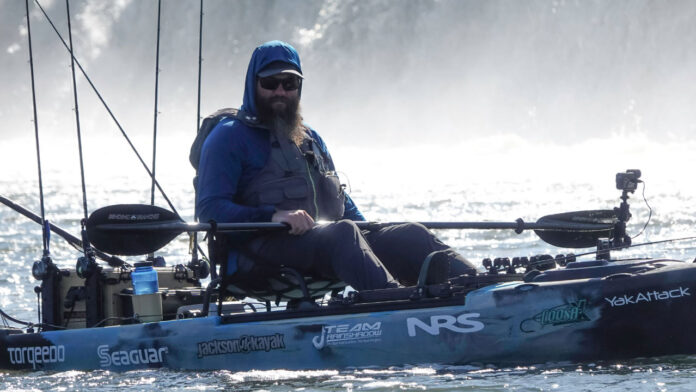Hey guys, today I'm at Pack and Paddle in Lafayette, Louisiana. I thought this would be a great opportunity to talk about kayak fishing paddles at different price points. Hopefully this post will give you guidance when choosing a kayak fishing paddle. After all, there's a big difference between paddles in that low $50 to $100 price range and ones that cost between $400 to $500. So let's jump in and take a look at what some of the differences are.
How You'll be Using Your Kayak Fishing Paddle
When making a paddle selection there are a few things to consider. First, think about if you'll be using the paddle most of the time.
Even in pedal kayaks there may be times when it's too shallow to use that pedal drive. Plus, the drive could become inoperable if there's some kind of mechanical issue with one of the components. Either way, you'll need to break out a paddle to get where you want to go.
I stand up while I'm fishing quite a bit, so having a good paddle is super important to me.
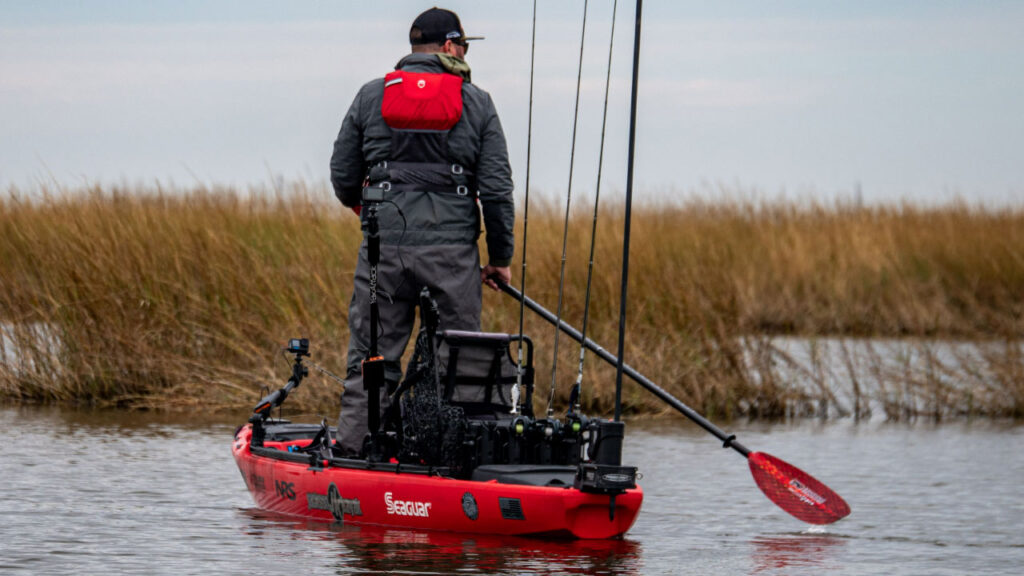
Choosing a Kayak Fishing Paddle on Price
Now let's talk about the differences between paddles at various price points.
I don't have any paddles in the low end of the price range. So today, we'll be starting in the $100 to $150 range with the Bending Branches Angler Classic. To start with, the difference between paddles at different price points are materials, weight, and efficiency.
On a lower price point paddle in that $50 to $100 range you're going to have an aluminum frame and a plastic blade. That frame is going to be very flexible and have a lot of give. The same goes for plastic blades.
With materials like these you'll lose a lot of efficiency. Plus, you'll be carrying a lot more weight around all day. It may not seem like a big deal when we're talking about ounces. However, moving that little bit of extra weight over a long period of time adds up.
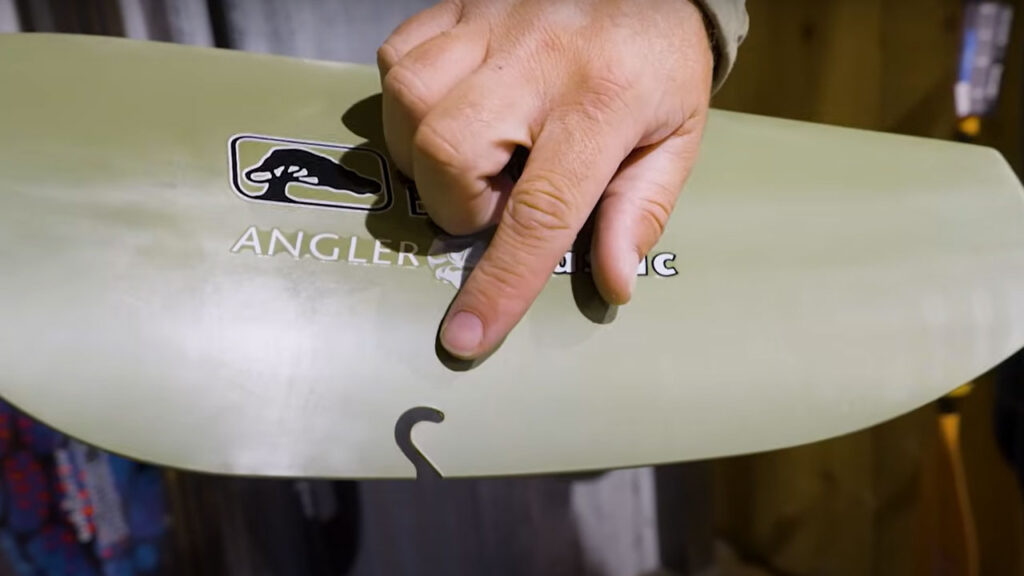
Bending Branches Angler Classic
All the paddles we'll be looking at today are in the Bending Branches Angler line.
We'll start with the Angler Classic which costs about $160. The Angler line goes from that starting point all the way to the top tier.
A few features come standard on paddles in the Angler line. One is that they all have a drip ring as well as a little notch cut into the blade. If you're wondering what the notch does, it allows you to retrieve hooks and lures. What you do is run your line through the notch and push the paddle down to the hook that's hung up below the surface.
The other thing all these paddles have is a measuring tape. I find that these come in really handy. This is especially true if you're a tournament angler who needs to cull fish before weigh-in.
If so, pulling a clunky board out every time you catch a fish can be a pain in the neck.
Angler Classic – Fiberglass Shaft and Polymer Fiberglass Blade
The Angler Classic has a fiberglass shaft and a polymer fiberglass blade. They're both far more efficient than their aluminum and plastic counterparts.
Since fiberglass doesn't flex as much, your energy will flow more efficiently through the paddle into the water. This means you'll move the boat easier without being too tired at the end of the day. It's also worth noting that it's quite a bit lighter.
Another big pro is that fiberglass is very durable. With the Angler Classic you don't need to be shy about pushing yourself off obstructions in the water which are common when you're kayaking.
Even if you stand up and move around frequently, you can use the paddle regardless of what position you're in.
There are also differences in the ferrule system. Some of these paddles can even be adjustable in length, but this is pretty standard for this price range. What you generally get is a fiberglass shaft with some type of polymer or fiberglass blade.
It's also a great starting point. I would definitely recommend that if you can't go any higher, at least try to get something in this price range.
If you can, you'll be a lot happier out on the water.
Angler Classic – Weight and Features
The Angler Classic comes in at 35 1/2 ounces. However, weight depends on paddle length.
As we take a look at these paddles you're going to notice that they all come with a drip ring. Many lower priced paddles don't come with drip rings. Essentially, drip rings stop water from flowing down the blade and shaft and ending up on your hands and lap. So they definitely keep you drier and more comfortable out on the water.
Angler Classics also have a snap button ferrule system which allows you to adjust the paddle to different angles. This is a big plus when you're paddling in the wind. It also makes it easy to tweak the paddle to match the motion of your stroke.
There are other options that will also allow you to adjust for the length in case you have multiple kayaks or you're moving from a high seat to a low seat position.
Don't Forget About Swing Weight
As we look through these different weights and materials, you'll also notice the difference in paddle swing weights. A big shout out to John at Paco Paddle for sending this one over. I think it's very important.
He suggests grabbing paddles and rocking, or swinging them back and forth when you're deciding which one to buy. By doing this you'll really feel the weight difference, especially in the blades.
As you move up in price point you'll notice that moving the paddles gets a lot easier. Weight is important because you'll be moving those paddles all day long out on the water. When you're going back and forth that little bit of extra weight really takes a toll. So keep that in mind as we move up the line and look at lighter materials.
And remember, those lighter materials are also going to add a lot of efficiency to your strokes.
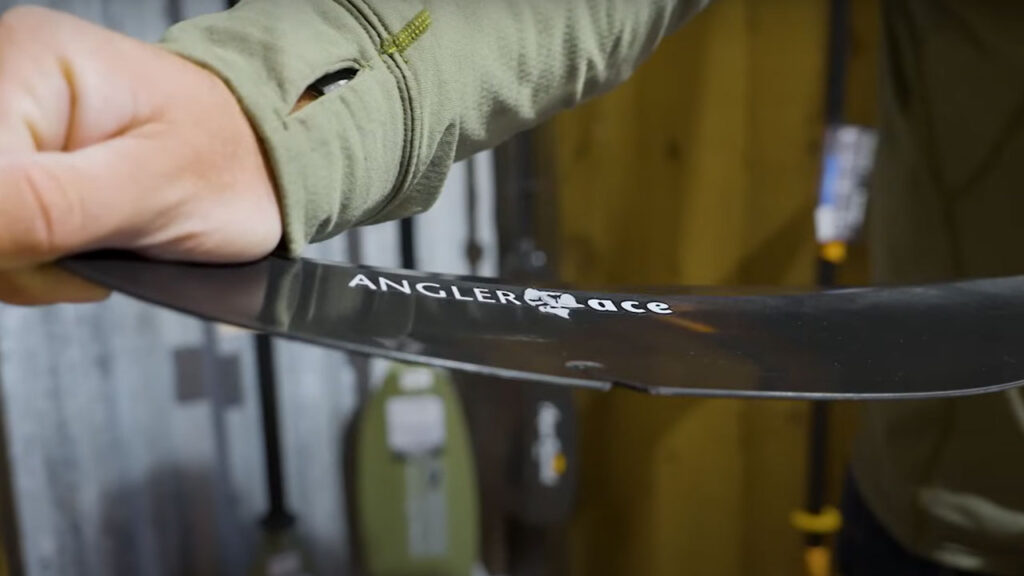
Angler Ace
Moving up the line we have the Angler Ace which transitions into a carbon-fiber shaft.
This reduces weight right off the bat. The Angler Ace also has a carbon reinforced nylon blade which has even less flex than the Classic's blade.
The Angler Ace starts at around 30 ounces. So the weight savings here is about 5 1/2 ounces. Trust me, you can really feel the difference. And again, this is going to be very rigid and a lot more efficient out on the water.
This is my go-to paddle when I'm river fishing and pushing off lots of rocks and other obstructions in the shallows. It also works well when I'm stand-up fishing around oyster beds because the carbon reinforced blade can take a ton of punishment.
The price point here goes up to about $225, so there's a bump between the Angler Classic which comes in at around $160.
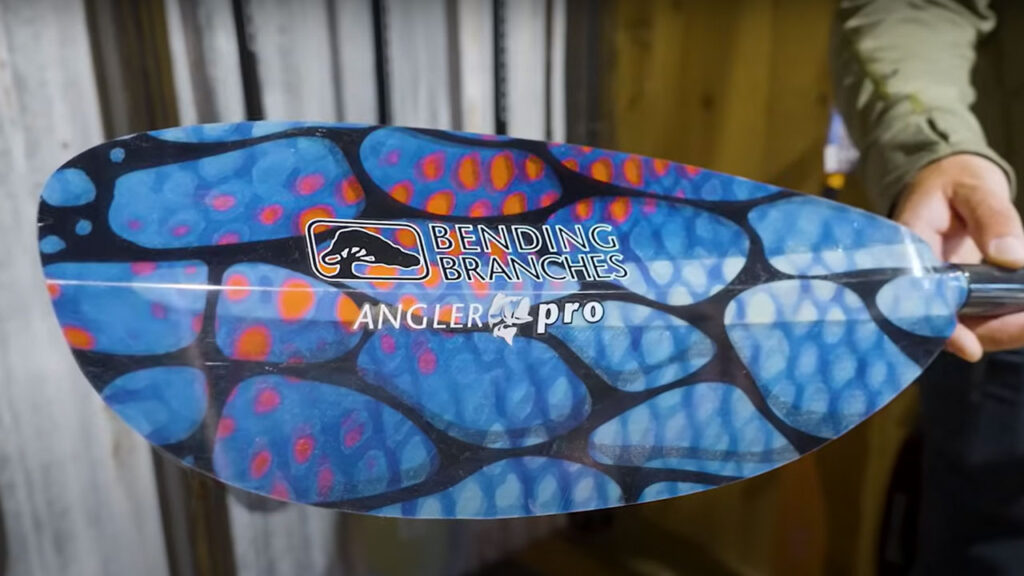
Angler Pro
Taking another step up the line we have the Angler Pro which costs about $325. So it's about a hundred dollars more than the Angler Ace.
The big difference here is the solid fiberglass blades. They're even stiffer and more efficient. You may already know this, but the more flex you have in your paddle the less efficient your strokes are going to be.
So as we move up the line these materials will add rigidity to the paddle to make it more efficient.
With paddles that don't flex, more power is transferred from your body to the water. This makes the whole process a lot more efficient. Unsurprisingly, more efficient strokes will move your kayak along easier with less effort.
This paddle also comes in at 28 1/2 ounces, but again, that'll vary depending on length.
Higher Price, Less Weight
As we compare various paddles you'll see that weight goes down as price goes up.
The Angler Pro is a great paddle if you'll be spending a lot of time in lakes and other large stretches of open water where you're not too worried about banging up the blade. However, this blade is super durable and I beat mine up quite a bit. In fact, it's the paddle I have on my Jackson Kayak Knarr most of the season in that nice Copperhead color.
Even so, I prefer to use this paddle in open water. When I know my paddle is going to take a beating on rocks and oyster shells I generally switch over to the Angler Ace.
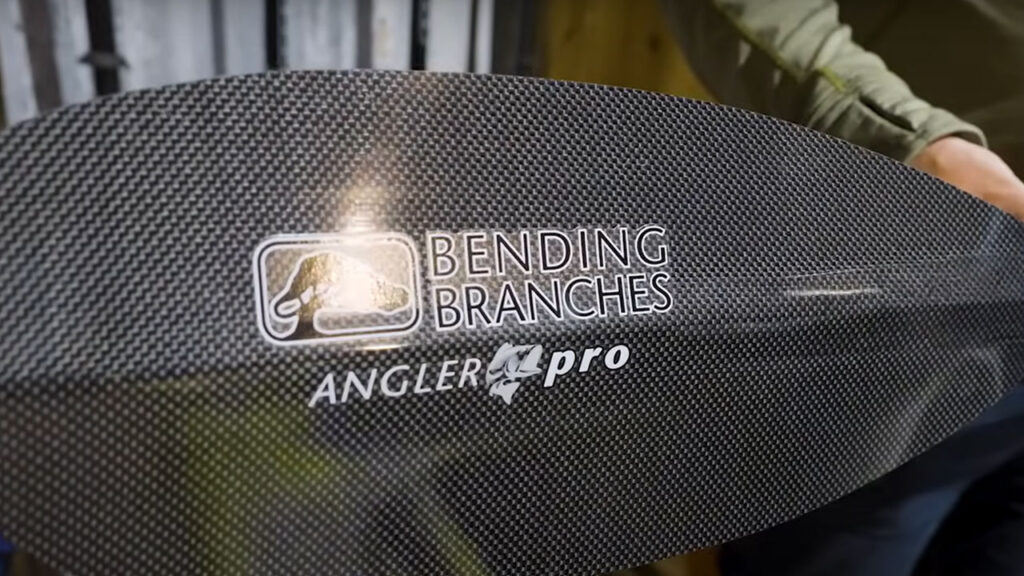
Angler Pro Carbon
The Angler Pro Carbon is Bending Branches' top-of-the-line paddle.
It comes with a 100% carbon shaft like the Angler Ace and Angler Pro, but it has a carbon blade too. So with the Pro Carbon you get big weight savings and maximum stiffness, so it's the best of both worlds.
It tips the scales at just 25 1/2 ounces compared to where we started out at 34 ounces. That's almost a 10 ounce weight savings right there. This is the lightest paddle in the company's Angler line.
Again, those extra ounces definitely come into play when you're out on the water for long spells. This is even more true if you're in a big lake with lots of open water.
Angler Line Standard Features
With Angler line paddles you get this built in tape measure.
It's a very useful tool, but what I really like is these paddle's versatility and durability. This is a big deal because most of us use our paddles as general tools instead of just moving the boat.
I don't know about you, but I'm always pushing off things like rocks and sand. I also have a knack for beating up my gear while I'm fishing. In fact, I beat it up a lot more than I would if I was just paddling around for fun.
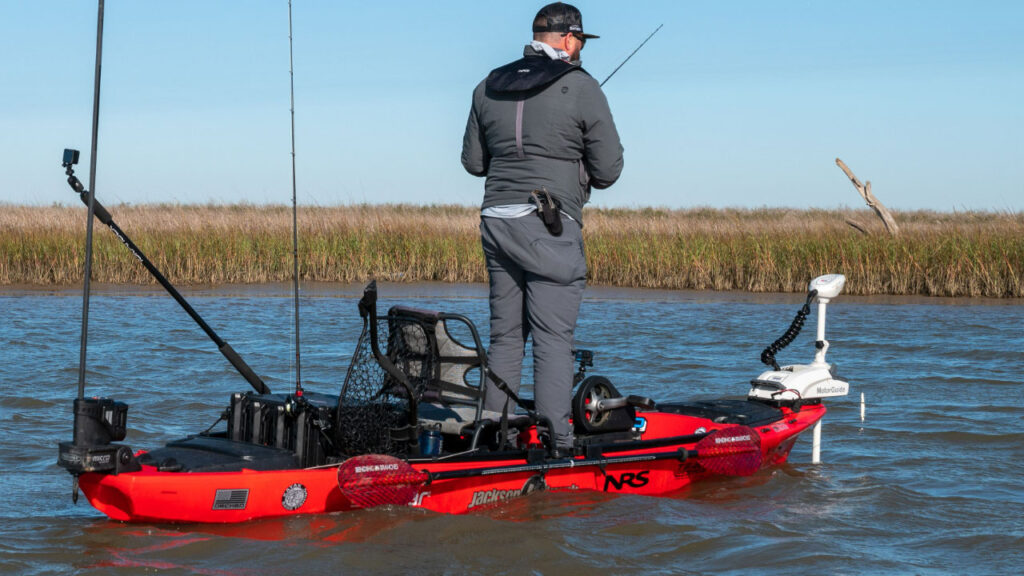
Cheap vs. Expensive Kayak Fishing Paddles Recap
There are a lot of different brands on the market, but I use a lot of Bending Branches products.
We've been partners for a very long time and I couldn't be happier with our relationship.
When you're considering paddles, make sure to think about all the things we looked at today. Here I'm talking about weight, rigidity, efficiency, and extra features. Price is definitely important, but it probably shouldn't be the only consideration.
I always recommend getting out in a kayak and trying out the paddles you're thinking about. By testing them in the real world you'll be able to see what feels right to you.
Of course, you also need a paddle that's the right length for you, your boat, and your style of fishing. And again, the main difference in paddles at various price points comes down to materials, weight, strength, and efficiency.
The more expensive materials are lighter, and as paddle prices increase the paddle also becomes more efficient. Efficiency is what gets your energy down the shaft, through the blade and into the water to move the boat. The more efficient your paddle, the more water will be able to cover while expending less energy.
In a nutshell, you really do get what you pay for when it comes to paddles.

Paddles: Bending Branches Angler Classic, Bending Branches Angler Ace, Bending Branches Angler Pro, Bending Branches Angler Pro Carbon
Fishing Kayaks: Jackson Kayak Knarr
Anchor: Power Pole Micro Anchor
Life vest: NRS Chinook PFD
Sunglasses: Wiley X



